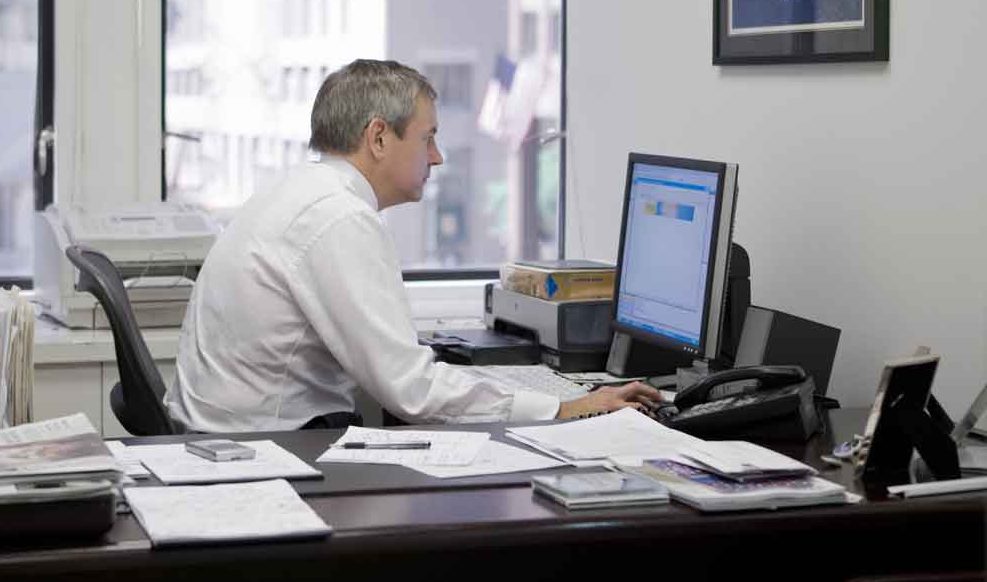Sitting Too Much Isn’t Healthy

If you spend nearly all of your free time sitting, you’re a typical American. Sitting too much is really bad for you, however. Here’s what you need to know.
How many hours a day do you spend sitting? Probably more than you think.
One survey of 2,640 U.S. adults ages 20 to 75 asked them to describe the previous 24 hours, checking boxes for various activities and estimating how long they spent on each. The average time doing activities that involved sitting was 9.5 hours a day. But most people underestimated their couch potato factor. When asked how much time they spent sitting in a day, they reported 7 hours on average.
YOU MIGHT ALSO LIKE: Break Up Hours of Sitting to Protect Your Health
It’s tempting but probably inaccurate to blame your office job. Only half of the 9.5 hours people reported in the survey were work time. According to the survey, people spend about 80 percent of their free time seated looking at screens, including TV and phones.
All that sitting isn’t good for your waistline or health. Research has linked prolonged sitting to:
- Early death
- Type 2 diabetes
- Poor heart health
- Weight gain
- Depression
- Dementia
- Multiple cancers
Getting exercise helps. But even if you exercise, sitting eight or more hours a day still raises your risk of an early death. If you sit four or fewer hours a day, but don’t exercise at all, you’ll also be at higher risk.
Your best bet is to sit fewer than eight hours a day and exercise at least 150 minutes a week.
To avoid sitting during your time off from work, you can:
- Stand up cooking or painting
- Play with your kids
- Garden
- Clean your house
- Play a sport
- Bike, walk, or swim
For exercise to count, you need to raise your heart rate so that you’ll be out of breath singing.
Here are some of the risks of sitting too long and what you can do about them.
Swollen, achy lower legs
Blood and fluid may pool in your lower body if you don’t get up often enough. You could get a blood clot, especially if you are pregnant, a smoker, or older. To get your blood moving in your calves, stand every half hour and move around.
You might also try wearing compression socks.
Lower back pain
Be aware of your posture at a computer workstation. You don’t want to strain your neck or slouch. But you still did need to get up, at least every half hour.
Consider investing in a sit-stand desk. But standing all day isn’t great for you, either, as people who stand for work can tell you about back, lower leg, and foot pain.
Heart disease
Cardiologist Rachel Lampert, MD, explains that prolonged sitting affects “sugar regulation and blood pressure. By altering the normal function of blood vessels, it feeds into diabetes and heart attacks. We know that the more you sit, the more likely you are to have a heart attack or die from a cardiac cause.”
That’s true even if you also exercise. You still need to get up during your computer time.
Weight gain
If you eat at your desk or in front of a TV, you might not notice how much food you are consuming. For most people, portion control is important for staying slim. Try to eat without doing anything else at the same time.
Standing burns about twice the number of calories as sitting, so you might stand to chop vegetables or when you ride a bus.
Cancer
Extra weight increases your risk of cancer, as does sitting at work. One study of more than 33,300 Japanese participants ages 50 to 79 found that men who sat for work more than seven hours a day had a higher risk of pancreatic cancer. Women who sat that much had a higher risk of lung cancer.
If you’re sitting for seven hours a day or more, you need to be even more careful about minimizing alcohol and red meat intake, quit smoking, and exercise.
Does standing at work help?
Some offices have installed “sit-to-stand” desks, which allow workers to vary the height of their desk so they can move between sitting and standing. But many people end up sitting most of the time.
For motivation, you may need to measure your sitting time, research shows. There also isn’t much evidence that such desks reduce back and shoulder pain or reverse the bad effects of sitting.
It’s worth noting that standing for long periods can cause severe pain, putting strain on your joints, lower back, knees, and feet without providing any more movement than sitting does.
What you really need to do is get up from your chair or move if you’ve been standing. A variety of phone and computer apps can remind you to move.
YOU MIGHT ALSO LIKE: 7 Ideas to Freshen up Your Walking Routine
Updated:
October 19, 2023
Reviewed By:
Janet O’Dell, RN